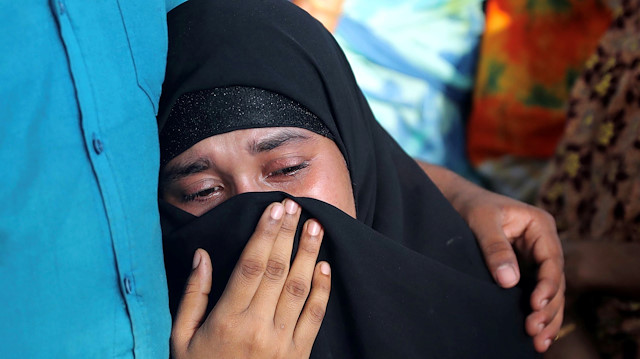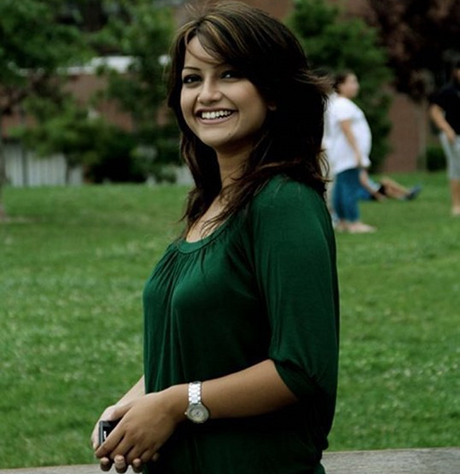Bringing Bangladeshi tradition to Rome
Findings from our analysis concerning screening rates are comparable to different surveys carried out in creating international locations, particularly the South-Asian subcontinent . Although findings from this research bangladesh mail order bride are novel and well timed for successful HPV vaccine program implementation, a number of limitations must be considered when decoding these results.
We hypothesized that data of cervical cancer might be low and willingness to obtain the HPV vaccine shall be high, just like other developing countries within the area. While the vaccine has been proven to be efficacious, excessive vaccine uptake is essential for profitable HPV vaccine program implementation . Several elements have been attributed to excessive vaccine uptake amongst women, including knowledge of cervical most cancers and the HPV vaccine, and its associated advantages , particularly in the United States (U.S.) and Australia. Additional research carried out in the U.S. have shown that caregivers of vaccinated children are more likely to be educated of the HPV vaccine than caregivers of non-vaccinated youngsters .
In Chapter One I read Shaukat Osman’s Janani to look at how the body of the subaltern female becomes the ultimate site of gender oppression. I also interrogate the ideology of motherhood which produces and upholds the picture of an all-sacrificing woman. In Chapter Two I show that the heroines of Taslima Nasreen’s Chaar Kannya are subalternized by the establishments of marriage and divorce.
Although cervical cancer is the second-main explanation for cancer deaths among women in India and the HPV vaccine is out there in the Indian market, uptake is low as a result of low awareness and knowledge. Efforts ought to be made in Bangladesh to keep away from an identical situation and sources ought to be allotted to a wide-unfold and culturally sensitive academic marketing campaign to market the HPV vaccine as a vaccine against cancer for optimum uptake. Education on cervical most cancers must embrace data on symptoms, risk components, and preventive strategies. A population-primarily based, cross-sectional survey was performed from July to December 2011 in one urban and one rural area of Bangladesh. A whole of 2037 ever-married women, aged 14 to sixty four years, had been interviewed using a structured questionnaire.

This is a vital concern and practitioners concerned in primary care, faculty-primarily based health services, and adolescent well being must be engaged to keep away from the potential unfold of misinformation regarding the safety and efficacy of the vaccine. Future implementation efforts should embrace culturally acceptable educational interventions by way of the media, significantly the tv, to be able to better inform the population of the association between HPV and cervical most cancers. Persistent an infection of approximately 15 excessive-risk HPV genotypes trigger nearly all circumstances of cervical most cancers and its immediate precursor lesions . Of these genotypes, HPV-sixteen and HPV-18 account for about 70% of worldwide cervical cancer cases, with HPV-sixteen causing about 55–60% and HPV-18 about 10–15% .
Previous studies have shown that low awareness and socioeconomic limitations can probably lead to underutilization of screening services for women. Education of girls by healthcare employees is a crucial issue for rising screening rates . Future analysis is needed to explore the level of data of cervical most cancers in different populations at high threat. The outcomes of our cross-sectional study are according to other assessments of data and acceptability of HPV vaccine knowledge performed in low- and center-income international locations. Previous research have reported each low levels of cervical cancer knowledge and excessive willingness to receive the HPV vaccine to prevent the event of cervical most cancers from HPV .
Six Bangladeshi Women on the Front Lines of Climate Change
The core of [Giulia and my] relationship as associates is centered round our visions for the world we wish to see around us. Giulia was really a Peace Corps volunteer, and what she skilled solidified her interest in sexual and reproductive health. I’m thinking about how we can improve choice for ladies, but as a Bangladeshi woman, I’m significantly fascinated in this venture.
Why Most Bangladeshi Women Still Don’t Have a Bank Account
Since Bangladesh is striving in direction of assembly the Sustainable Development Goals (SDGs) 2.2 plan of ending all types of malnutrition by 2030, an built-in/holistic strategy is needed to address both the under- and overnutrition among these populations. Community-level variables (neighborhood wealth and group illiteracy status) offered mixed outcomes on this study. While neighborhood illiteracy status was not significantly related to women’s malnutrition, community wealth had a big impression on women being underweight, at-danger for overweightness, overweight, and obese. Similar to in an earlier study in Bangladesh , we found that prime wealth communities had been much less more likely to have underweight women.
In order to improve rural women’s entry to maternity care, in 1996 the Bangladesh Rural Advancement Committee (BRAC) instituted services for birthing women in 21 health services in each Thana. This paper stories on research carried out three years later, based mostly on interviews with women who gave delivery in one BRAC Health Centre (BHC) and women who gave start at home, interviews with workers of the BHC and statement of supplier-affected person relations. Most women only attended the BHC as a result of problems, but the BHC was unable to deal with most problems and referred women to the district hospital, where they received poor quality care. Female paramedics who attended regular deliveries had been praised for being caring, but made women deliver mendacity down, didn’t always use aseptic procedures and have been too busy to provide data, making birth a passive experience.
Rimple has engaged with the experiences of Bangladeshi women prisoners in India for over a decade. Her doctoral research focussed on the methods of resistance and survival that the Bangladeshi women prisoners employ to undergo the on a regular basis life in jail. Love with female and male prisoners was one of many ways during which they survived and made meaning of jail life. The feeling of being in love additionally enabled them to break several heteronormative and institutional norms that bound them. Another important discovering from her work has been the continuity between pathologisation and criminalisation of women and how one results in the other when women cross borders.
Renu Bibi, Dhaka, Bangladesh

However, the prevalence of overweightness amongst women in Bangladesh has increased significantly over the last decade. To formulate appropriate policies, it’s essential to determine the determinants which have substantial results on malnutrition—each undernutrition and overnutrition—amongst reproductive-aged women. Cross-sectional knowledge of 10, 431, and 16,478 ever-married nonpregnant women aged between 15 and 49 years who didn’t give birth in the two months preceding the survey have been extracted from the 2004 and 2014 Bangladesh Demographic and Health Surveys, respectively.




